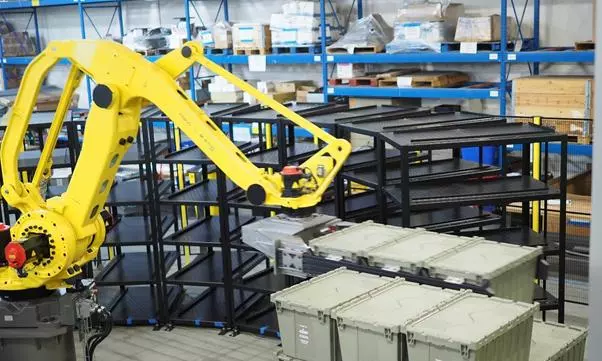
Material handling cages serve as an essential component in warehouses, manufacturing plants, and distribution centers. These cages streamline storage, transportation, and organization, making operations more efficient and reducing safety hazards. With their durable construction and versatility, they provide a secure solution for handling various types of materials, including heavy machinery components, bulk goods, and fragile items.
In fast-paced industrial environments, optimizing space and ensuring smooth logistics is a priority. Material handling cages assist in maintaining an organized workflow by facilitating proper stacking and easy accessibility to stored items. They come in different designs, from collapsible models for space-saving storage to rigid structures meant for heavy-duty applications. By integrating these cages into daily operations, businesses can enhance productivity, minimize damage to goods, and ensure compliance with safety regulations.
Types of Material Handling Cages for Different Applications
Choosing the right material handling cage depends on the specific needs of a business. With a wide range of options available, each type serves a distinct function in improving efficiency and safeguarding materials. Wire mesh cages, for example, provide visibility and ventilation, making them suitable for perishable items or products that require airflow. Their lightweight yet sturdy construction makes them easy to maneuver while offering sufficient protection against damage.
Pallet cages, on the other hand, are ideal for heavy loads and bulk storage. Designed to fit standard pallets, these cages enhance transportation efficiency by keeping goods secure during transit. Many of these cages are stackable, maximizing vertical space in warehouses. Additionally, collapsible pallet cages offer the advantage of easy storage when not in use, reducing clutter and optimizing floor space.
For hazardous materials or high-value items, security cages provide reinforced protection with lockable doors and tamper-proof designs. These cages ensure that sensitive products remain safeguarded against unauthorized access, making them a preferred choice for industries handling pharmaceuticals, chemicals, or expensive equipment. The right selection of material handling cages contributes to a more organized and secure workspace, tailored to the unique demands of each industry.
Enhancing Safety and Efficiency with Material Handling Cages
Beyond storage and transportation, material handling cages play a significant role in workplace safety. Properly designed cages prevent goods from shifting or falling, reducing the risk of accidents and injuries. When materials are securely enclosed, workers can maneuver heavy loads without fear of unexpected spills or collapses, creating a safer work environment.
Another benefit of these cages is their impact on efficiency. By utilizing designated storage solutions, businesses can streamline inventory management and minimize the time spent searching for specific items. Employees can easily identify and access materials without unnecessary handling, improving workflow and reducing labor costs. Additionally, cages designed for automation and conveyor systems further enhance productivity by integrating seamlessly with modern logistics operations.
Durability is another key factor in the effectiveness of material handling cages. Constructed from high-quality steel or reinforced aluminum, these cages withstand harsh industrial conditions, ensuring long-term reliability. Corrosion-resistant coatings and weatherproof designs make them suitable for both indoor and outdoor applications, offering businesses a cost-effective solution for handling materials over time.
Customization and Adaptability in Material Handling Cages
Material handling cages are not one-size-fits-all; they can be customized to meet the specific requirements of various industries. Businesses that deal with irregularly shaped products may benefit from custom-built cages with adjustable compartments or reinforced structures. Foldable designs, removable side panels, and access doors enhance usability, providing flexibility in different operational settings.
Many manufacturers offer tailored solutions, allowing businesses to choose the cage size, material, and locking mechanisms that best suit their needs. Customization extends to color-coding for easy identification, labeling systems for inventory tracking, and modular designs that adapt to changing storage requirements. With the right configurations, businesses can maximize efficiency and create a streamlined handling process.
Investing in material handling cages is an essential step toward improving warehouse management, enhancing safety, and optimizing operational efficiency. By selecting the appropriate design and features, businesses can achieve better organization, protect valuable assets, and maintain a more structured workflow.




More Stories
Best Practices for AI Adoption in Education
How Technology is Revolutionizing Service Quality in Casual Dining by Lawrence Todd Maxwell of MX Properties, Inc
Role of Business Analyst in Organizational Sales Management